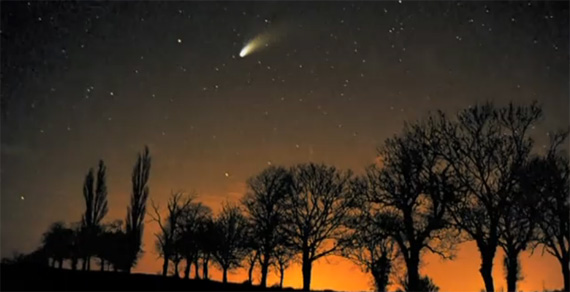Taking photos of star formations and galaxies seems difficult and expensive, but this video gives some helpful tips to encourage photographers to try using inexpensive equipment:
The first part of the video explains how to capture a basic photo of the stars and amplify the faint light of constellations. You will simply need a DSLR camera and a sturdy tripod. Switch over to manual mode and use camera settings such as these (this may vary depending on lighting conditions, but you could try it as a starting point):
- Aperture: Somewhere around f/5.6
- Shutter Speed: Long shutter speed such as 30″
- ISO: Somewhere around 800
The video offers the idea of using a notecard to block the light while pressing the shutter button to eliminate vibrations. But I would suggest just using the self-timer mode or a remote shutter if you have one.

Photographing Stars
However, the next move includes a telescope, so if you do not have access to a telescope, you are not likely to get the results shown in the video. If you do have a telescope, the following ideas are quite interesting:
- Place a compact camera up to the telescope eyepiece and take a photo.
- Purchase an adapter for your SLR and attach it to the telescope instead of the eyepiece.
- Purchase a webcam with interchangeable lens and use a similar adapter technique as item 2.
The webcam idea was interesting because after taking a fairly blurry short video, the narrator used composite imaging software to combine the video frames into a single, clearer image. The examples in the video were high quality amateur photographs that could inspire individuals with an interest in astronomy. With a small investment in the extra adapters, photographers with a telescope may capture their own images of nebulae, planets and star formations they can see with their telescope.
Like This Article?
Don't Miss The Next One!
Join over 100,000 photographers of all experience levels who receive our free photography tips and articles to stay current:






nice tutorial